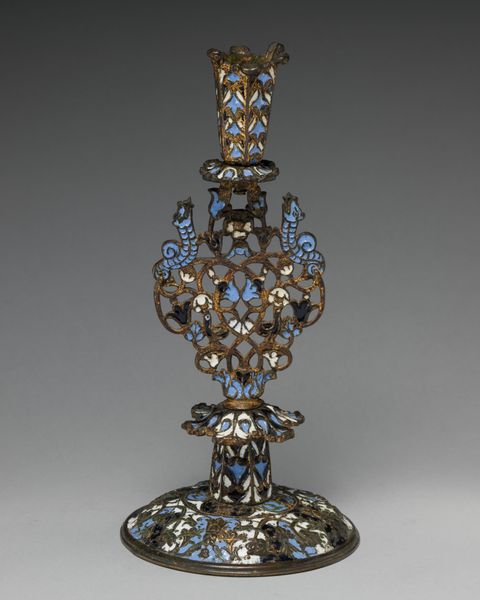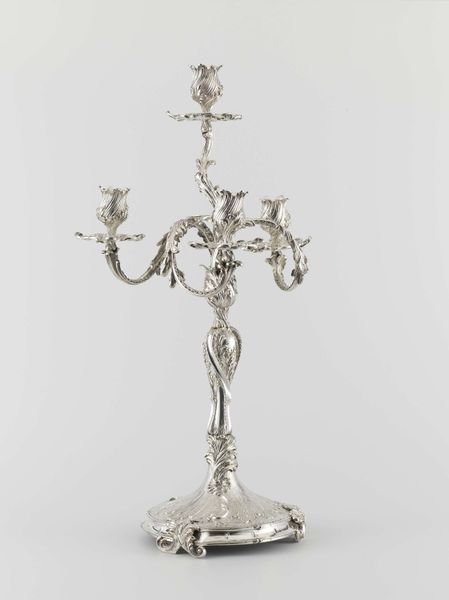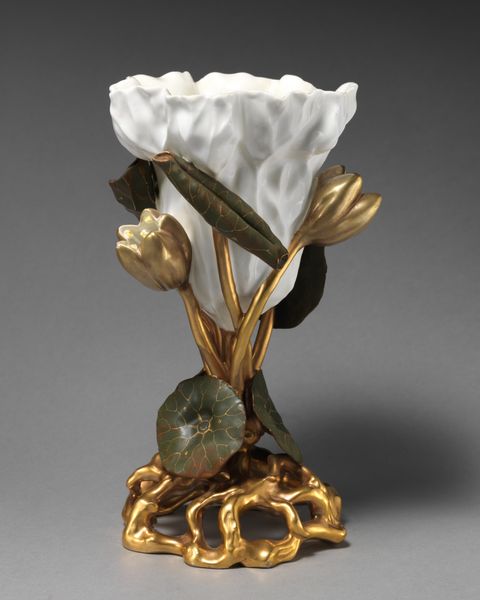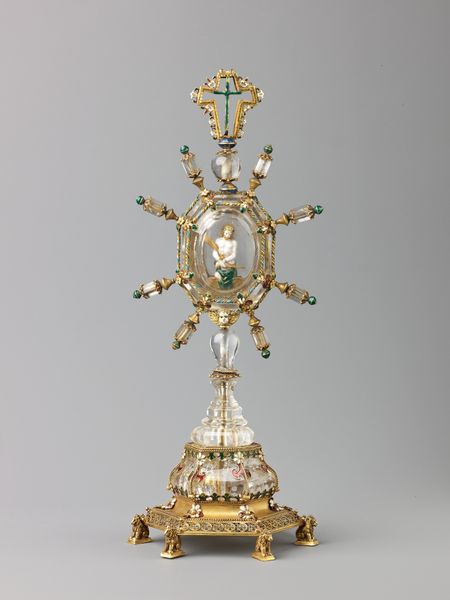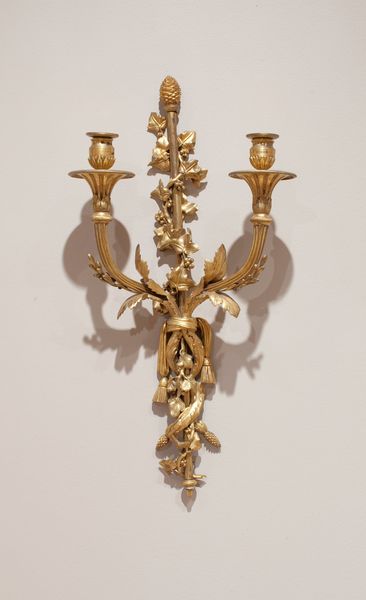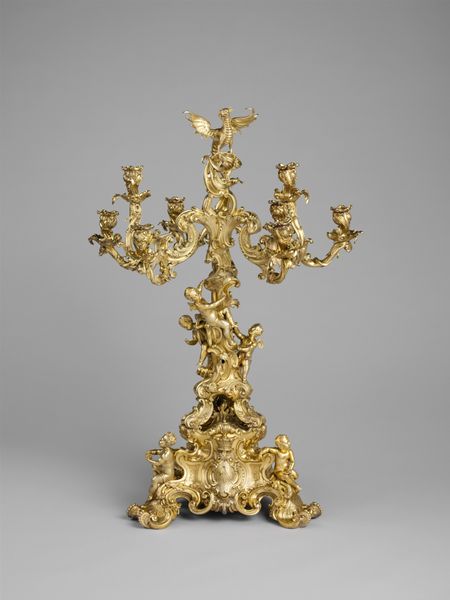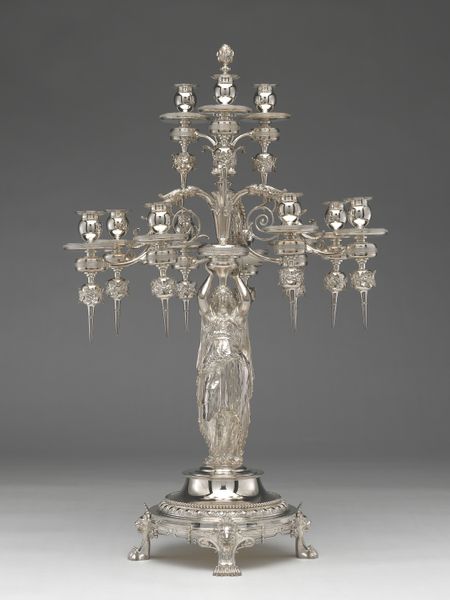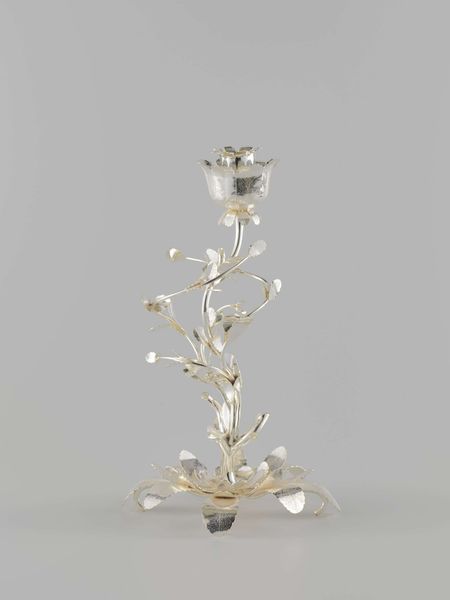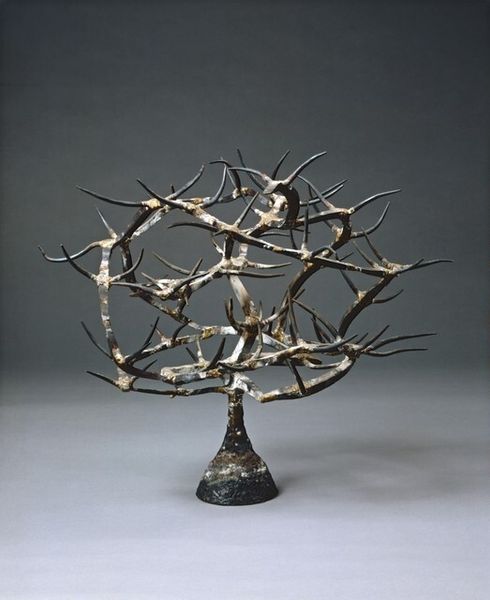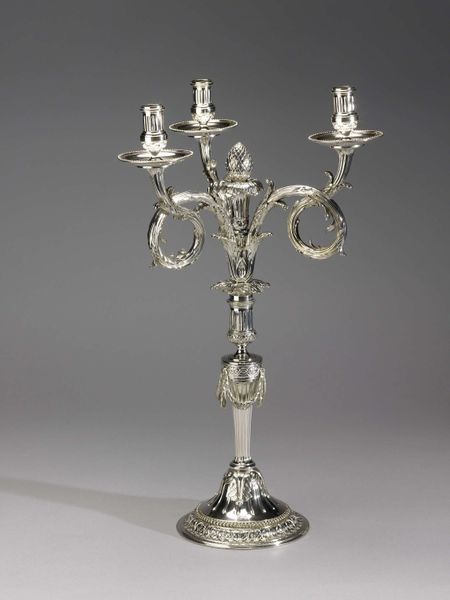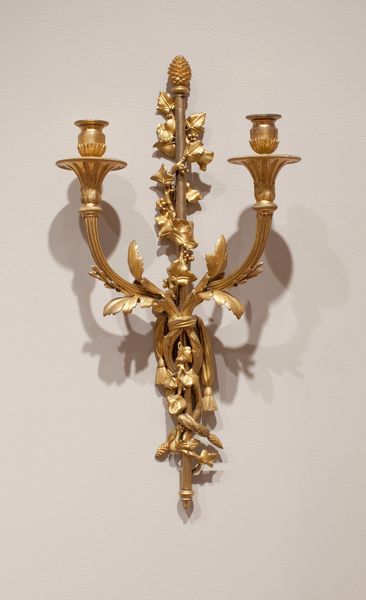
Tree-shaped Fragment of a Royal Crown c. 7th - 8th century
0:00
0:00
carving, metal, sculpture
#
byzantine-art
#
carving
#
metal
#
sculpture
#
history-painting
Dimensions: 8 × 2 7/8 × 1 1/2 in. (20.32 × 7.3 × 3.81 cm)
Copyright: Public Domain
Editor: This intriguing artifact is titled "Tree-shaped Fragment of a Royal Crown," dating back to the 7th or 8th century. It appears to be crafted from metal and possibly other materials, currently residing at the Minneapolis Institute of Art. The filigree creates such an airy quality despite its likely heavy materials. What can you tell me about it? Curator: Formally, the intricate openwork reveals a profound engagement with positive and negative space. The eye is invited to traverse a network of branching forms, carefully arranged to evoke a sense of arboreal growth. Notice the material—the patina suggests an alloy of copper—its color relationships with the presumed gold are complex. Do you see how the the crown’s original form contrasts against the fragment as it stands today? Editor: The original shape seems key to the whole experience of the object; the break makes it a different artwork somehow. Is that right? Curator: Precisely. Fragmentation, in itself, can be considered a formal element. The disruption of the object transforms it. Its relationship with its past and the physical laws that previously dictated it become inverted: from solid crown, it is transformed into wispy sign. Can you see the tree now emerging, like a phantasm, from the gilded lacework of the filigree? Editor: That’s really interesting! I hadn't thought about the missing parts as being integral to the work itself. Thanks! Curator: My pleasure! Always analyze the work’s pure physicality first! I look forward to discovering more objects together soon.
Comments
minneapolisinstituteofart almost 2 years ago
⋮
Since the early years of Buddhism in South Asia, Buddhists have enshrined funerary relics in stupas, or burial mounds. As Buddhism spread to Northeast Asia in subsequent centuries, thousands of stupas—often tower-like and dubbed “pagodas’” in the West—were constructed, each embedded with bone fragments or other relics (sarira) housed within a multi-layered reliquary. Many of these sacred burials included precious stones and jewels as well as other sacred objects alongside the primary reliquary holder. This tree-shaped decoration, once attached to the band of a royal crown, is believed to have been buried alongside a pavilion-shaped reliquary (2019.21).
Join the conversation
Join millions of artists and users on Artera today and experience the ultimate creative platform.
